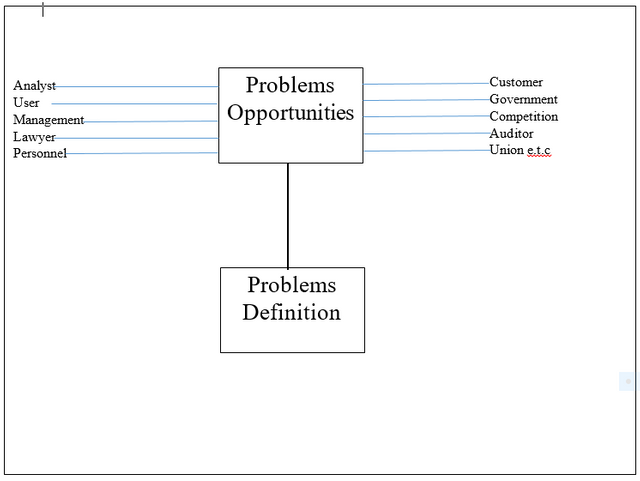TECH EDUCATION | DEVELOPING COMPUTER_BASED INFORMATION SYSTEMS SERIES 1 by @anyiglobal || 10% Payout to Zero to Infinity
Good day everyone!
Important Note: This content will contain mostly texts rather than images!
What is a System?
It is beyond the scope of this content to embark on a detailed discussion of systems theory, however, it will be useful at this stage to have a working definition of the word system. If we look at some examples of systems solar system, digestive system, public transport system, central heating system, and computer system, we might arrive at some acceptable definition.
Some of the systems occur naturally, e.g. the solar system, or the human central nervous system. Other systems are man-made. They can be physical, such as national railroad network or a hi-fi system. Some are procedural, such as the jury system or the electoral system. There systems of government (democracy, communism), social systems (tribes, castes, classes), and many others.
When we talk of designing systems, we usually mean Information Systems. These are designed to collect, store, process and manage the flow of information within an organization. It is from this perspective that we take our definition for a system. We define a system as a set of objects or elements which are connected or associated so as to form a whole, and designed to achieve a purpose.
Some Information Systems do not feature computers, and even in those that do, the computer is not necessarily the most important part. The information itself, the way it is collected or distributed, and above all, the people who use the information in their work (accountants, sales-people, production managers, buyers, administrators or anyone else in the organizations), are all just as vital.
The Phases of Systems Development
The entire process of developing a computerized system can be broken down into seven phases, as follows:
- Systems initiation and preliminary investigation;
- Systems analysis;
- Designing the system;
- Developing the software system;
- Implementing the system;
- Maintaining the system;
Systems Initiation and Preliminary Investigation
There are many reasons why new systems are begun or old systems revised. The impetus , the cause for change can come from many sources. These sources can be classified as an internal or external sources.
An internal source is one within the company or organization, such as a manager trying to improve inventory control or a user asking for an improved reporting system.
An external source is outside the organization, for example, an agreement with union officials for payroll deduction of dues, or customers complaining about incorrect bills.
Fig 1. Internal and External sources of system changes
Structure: Designed with Ms Word
Whatever the reasons, some impetus will cause management to give the analyst the authority to pursue the problem. New or changed systems may be inspired by opportunities anticipated by management or others. Systems are changing the ways businesses are done. Some typical opportunity categories are as follows:
- to increase productivity, e.g. to do more in less time;
- to improve management decisions;
- to strengthen control over a system;
- to improve customer service, e.g. to reduce waiting at a bank or post-office.
Defining the Problem
The first job for the systems analyst is to understand clearly the terms of reference for any investigation which may be requested. This is defining the problems. These will set the main goals (or objectives) and limits (or scope) for the study. For example, the management of a large mail-order company decided to look at ways of improving their response to telephone inquiries and orders. An analyst was asked to examine this area to see whether better or faster responses could be achieved. Written orders, inquiries and complaints were not to be studied, nor was dispatch of goods.
The analyst must differentiate between symptoms and actual problems. The impetus for a new system or system change may be a perceived problem, but its cause could turn out to be quite different from what was originally thought. The analyst, with the user, must identify and define the problem and must agree on the scope of the project on what the new or revised system is supposed to do and not do.
Before s system can be designed, the people concerned must agree on the objectives, i.e. what exactly the system is intended to do. This is stating the organizational purpose for which a project is being done. This may sound obvious, but many poor systems are designed without clear goals. The most successful projects are those that truly do what their users expected. Users' experience must be clearly defined. The definitions will be expressed as a set of objectives.
Conclusion
Information systems are very important in managing business processes. It is pertinent to have a clear objectives before developing these systems in order to do what the users expected it to do. Alright guys, this is the end of this series. We will continue again with the next series tomorrow! Thank you very much for reading this till the end, and I hope you learnt something new today!! Please feel free to ask me any question in the comment sections below.

Your post has been supported by @tarpan using @steemcurator07 account.
Thank you for making a post in the #Science/ #Computing/ #Technology category. We appreciate the work you have put into this post.
We have analyzed your post and come up with the following conclusion:
Follow @steemitblog for all the latest update.
Thanks